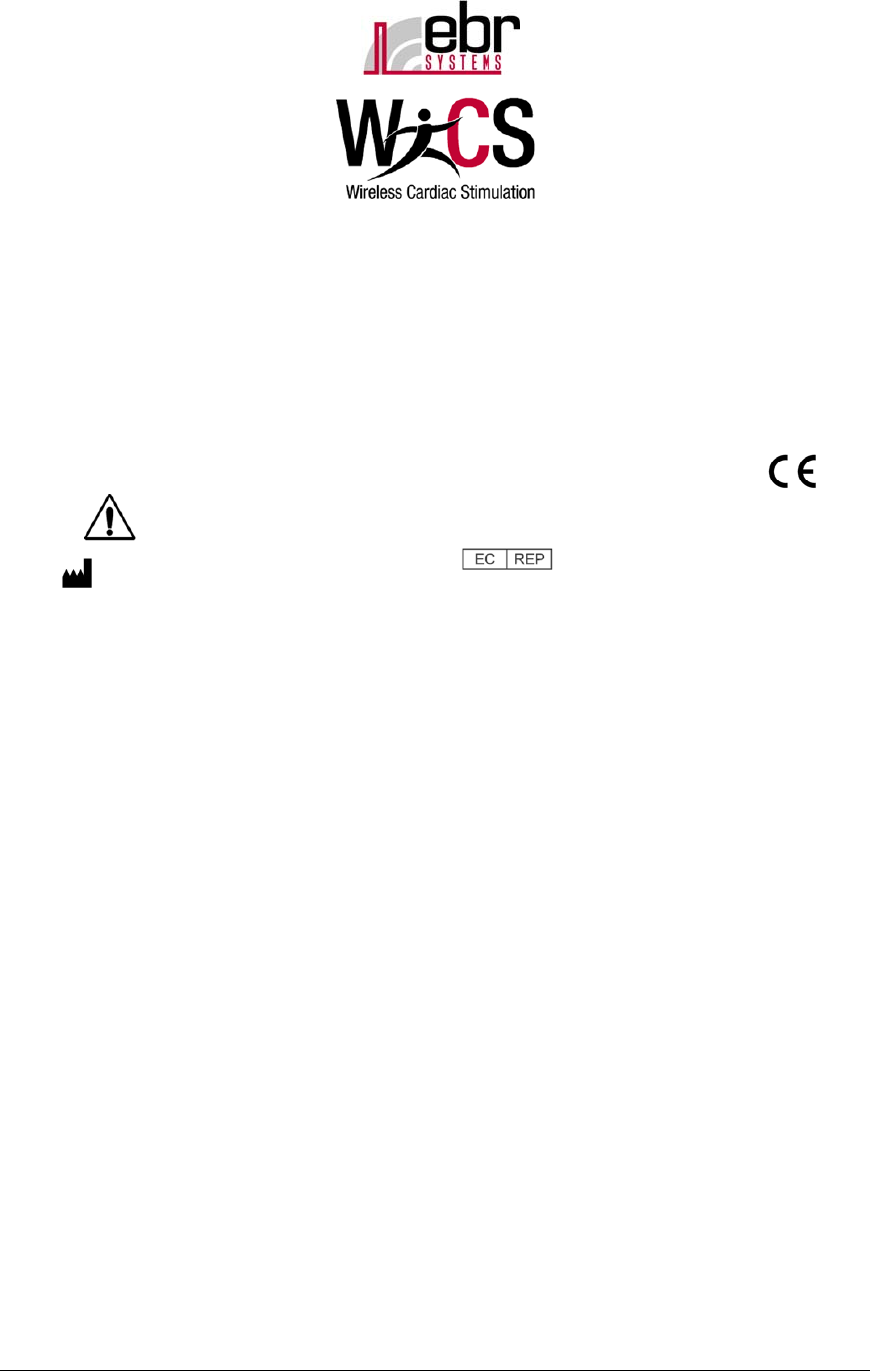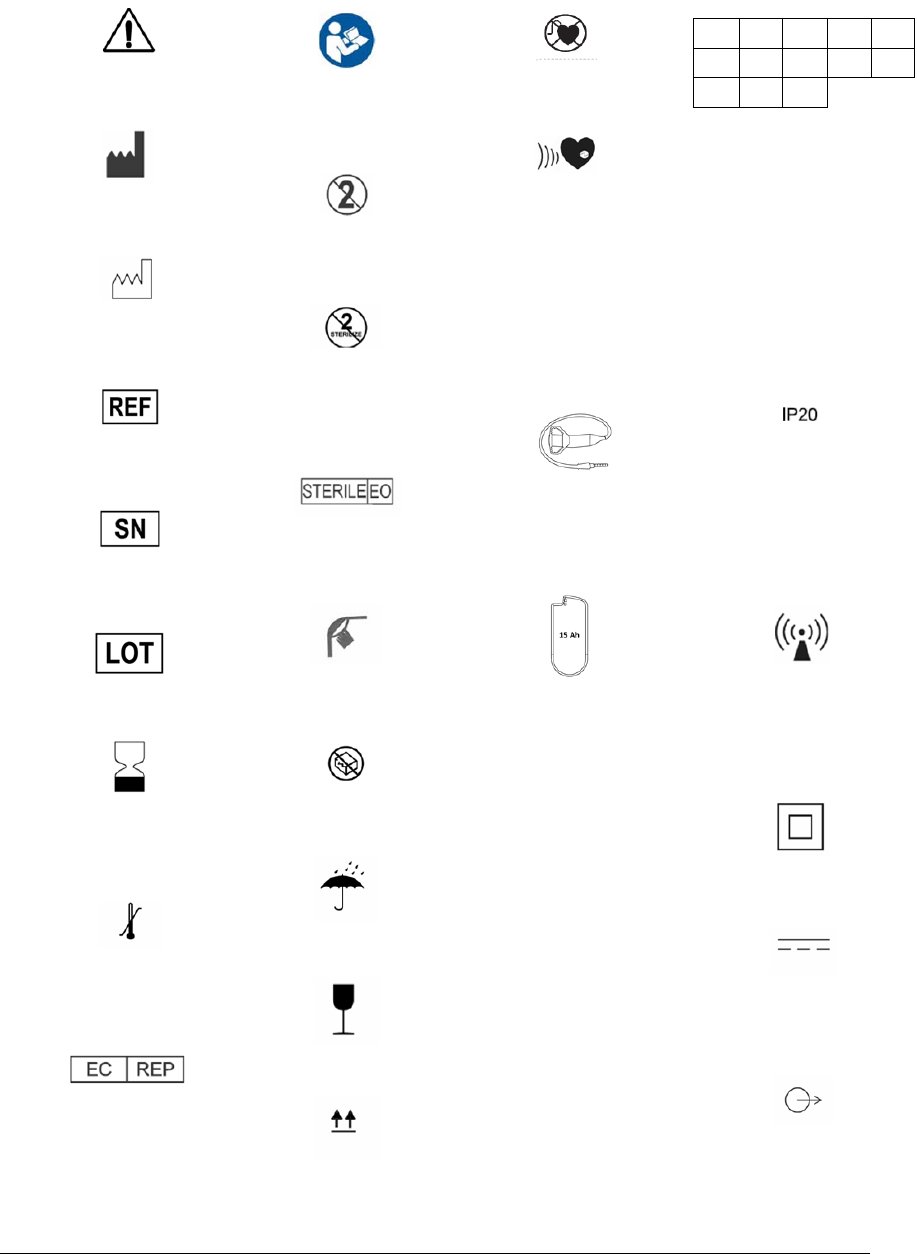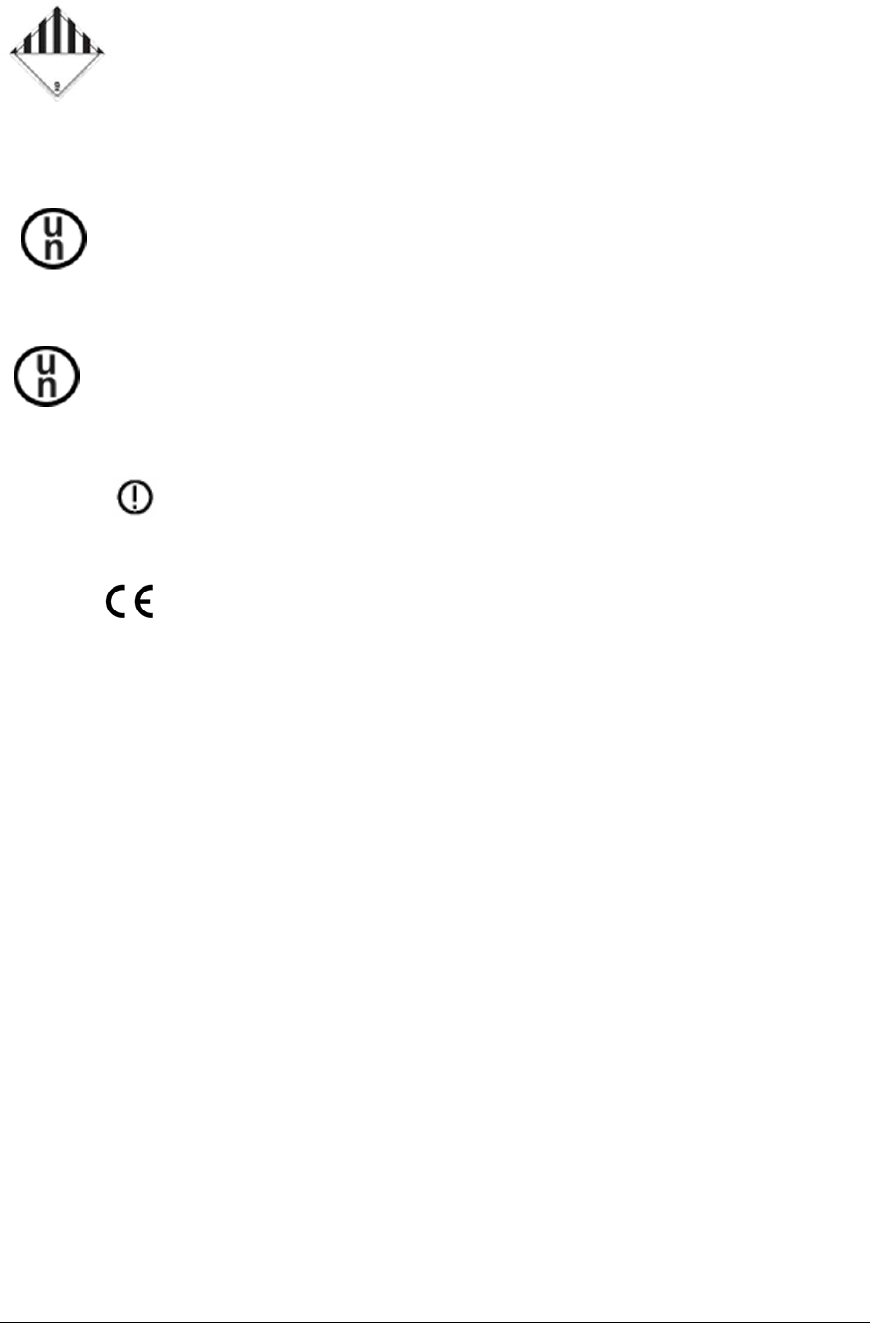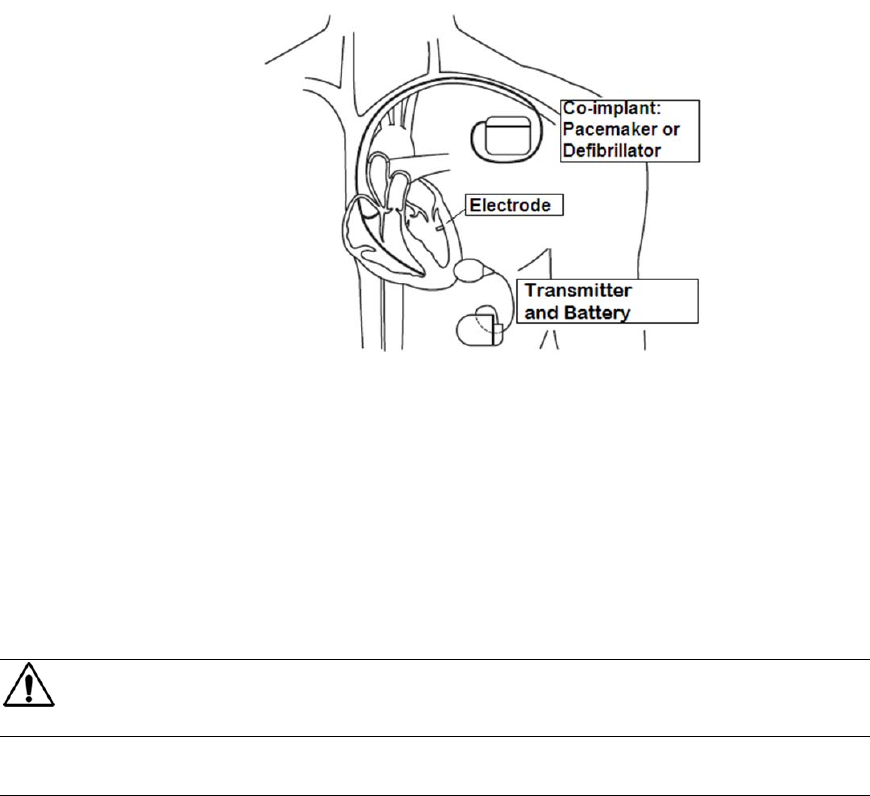EBR Systems 4100 4100 User Manual user manual meds radiox
EBR Systems Inc 4100 user manual meds radiox
Contents
- 1. user manual
- 2. User Manual
User Manual

LBL-02744-EN Rev.D
®
WiCS-LV System – Instructions for Use
EBR Systems, Inc.
686 West Maude Ave
Suite 102
Sunnyvale, CA, 94085 USA
Wireless Cardiac Stimulation
®
System and WiCS
®
are registered trademarks of EBR Systems Inc.
© 2010-2016 EBR Systems, Inc. – U.S.A.
EBR Systems, Inc.
Phone: +1 408 720 1906
Email: support@ebrsystemsinc.com
Premier Research Group Limited
1
st
Floor, Rubra 2, Mulberry Business Park
Fishponds Road, WOKINGHAM
Berkshire, RG41 2GY, United Kingdom
0086
2015

WiCS-LV Instructions for Use - 1
LBL-02744-EN Rev. D
Symbol Meanings and Compliance Statements
Caution, consult
accompanying documents.
Identifies the Authorized
EC Representative in the
European Community.
Identifies the product’s
model designation.
Identifies the product’s lot
number.
Identifies the product’s
serial numbe
r
.
Indicates the low and high
temperature requirements
associated with transport
and storage of the produc
t
.
Do not use the product if
the package is damaged.
Indicates the Use Before
Date for the product. Do
not use products beyond
the labeled date.
Ultrasound is transmitted
from the device into the
body. The ultrasound is
converted by the system to
an electrical output in the
heart.
The date that the product
was manufactured.
The name and address of
the manufacturer.
The Programmer and the
Pulse Generator communicate
using RF transmissions in the
frequency range of 402.000-
405.000 MHz.
Content of the package
was sterilized using an
ethylene oxide process.
The package contains a
Single Use Device that
may not
b
e Reused.
Do Not Reuse and Do Not
Resterilize. The package
contains a Single Use
Device that may not be
resterilized.
It is mandatory that you
read these Instructions for
Use in entirety before
using the device.
Do not connect battery to
the hear
t
.
This side up.
Fragile contents.
Keep dry.
Indicates the location to
peel away the sterile
barrier.
Indicates the level of ingress
protection: (2 - no probe or
finger larger than 12.5mm can
gain access to the device) and
(0 – there is no protection
against fluid ingress).
Class II equipment per IEC
60601-1.
Indicates a direct current (DC)
input at the voltage and
current indicated with the
symbol.
Electrical signal outpu
t
.
AT BE CH CZ DE
DK FR ES GB IE
IT NL PL
The equipment may be placed
and operated in Austria,
Belgium, Switzerland, Czech
Republic, Germany, Denmark,
France, Spain, United
Kingdom, Ireland, Italy,
Netherlands, and Poland.
The device is intended for
indoor use only.
Cet appareil est voulu pour
l'usage intérieur seulement.
1
Quantity of package
contents
WiSE CRT System
Transmitter Model 4100.
Left ventricular pacing
system triggered by co-
implant.
WiSE CRT System
Battery Model 3100.
Energy source for the
implanted components
of the WiSE CRT
System.

WiCS-LV Instructions for Use - 2
LBL-02744-EN Rev. D
LITHIUM METAL BATTERIES
CONTAINED IN EQUIPMENT
UN 3091
The Battery Module is fully regulated Class 9 Dangerous Goods, in accordance with
IATA Dangerous Goods Regulations and 49 CFR, Transportation and must be labeled and
transported in accordance with regulations. The label indicates that the package contains
Lithium Metal Batteries Contained in Equipment, Hazard Class UN3091.
4G/Y0.4/S/**
USA/+CJ0101
The Battery single unit packaging has been tested to a 4G Combination Package
containing a Lithium Carbon Monoflouride Battery, in accordance with the UN Manual
of Tests and Criteria for the Transport of Dangerous Goods and 49 CFR, Transportation.
The packaging meets Packaging Code 4G, Performance Level Y for Packaging Group II
for Gross Mass weight of 0.4 kgG, Solids. The year of manufacture (**) and the
manufacturer identification are as indicated on the package.
4GV/X11.1/S/**
USA/+CG0117
The packaging meets Packaging Code 4GV, Performance Level X for Packaging Group I
for Gross Mass weight of 11.1 kgG, Solids. The year of manufacture and the
manufacturer identification are as indicated on the package.
The alert symbol next to the CE Mark signifies that the radio transmission in which the
product operates is outside of the harmonized spectrum and therefore is a Class 2 Radio
Equipment per the R&TTE Directive. The responsible national authorities of the
countries in which the Programmer is intended to be placed have been appropriately
notified.
The CE mark signifies compliance to the European Directives; Active Implantable
Medical Device Directive ver. M4 (90/385/EEC) and Radio & Telecommunications
Terminal Equipment (199/5/EC), with Notified Body, BSI. The year of authorization for
the AIMD CE Mark is 2015.
Radio equipment to modify operating parameters and to collect data stored in an
implantable cardiac pacing system. Equipment is restricted to indoor use.
Funkgerät zur Änderung von Betriebsparametern eines implantierbaren
Herzschrittmachers und zum Abrufen der im Schrittmacher gespeicherten Daten. Der
Gebrauch dieses Gerätes ist auf den Innenbereich beschränkt.
Les équipements radio servent à modifier les paramètres de fonctionnement et à recueillir
des données stockées dans un système de stimulation cardiaque implantable.
L’équipement est restreint à une utilisation interne.
Radioapparatuur voor het wijzigen van operationele parameters en voor het verzamelen
van gegevens die zijn opgeslagen in een implanteerbare cardiac pacing-systeem.
Apparatuur alleen binnenshuis gebruiken.
Apparecchiatura radio per la modifica dei parametri di funzionamento di un sistema di
cardiostimolazione impiantabile e la raccolta dei dati in esso memorizzati. L'uso
dell'apparecchiatura è limitato ad ambienti chiusi.
The system has been tested to and complies with the essential requirements stated in
Article 3 of the Council Directive 1999/5/EC (Radio Equipment & Telecommunications
Terminal Equipment) for Class 1 and Class 2 equipment.
0086
2015

WiCS-LV Instructions for Use - 3
LBL-02744-EN Rev. D
System Description
The Wireless Cardiac Stimulation
®
System (WiCS
®
) from EBR Systems, Inc. is an implantable,
cardiac pacing system capable of delivering pacing level energy to the heart without using a lead.
The technology used to achieve this leadless, wireless pacing is based on converting ultrasound
energy to electrical energy. A subcutaneously implanted ultrasound transmitter initiates an
ultrasonic energy pulse that travels through the tissue to intersect an ultrasound receiver implanted
in the heart. The receiver converts the ultrasound energy to electrical energy at sufficient
amplitudes to stimulate cardiac tissue through pacing electrodes that are integrated into the
ultrasound receiver. This receiver is referred to herein as the Electrode.
The WiCS pacing system applies the wireless stimulation technology to endocardial stimulation of
the left ventricle (LV). WiCS-LV replaces the pacing function of a coronary sinus (CS) lead
when used in conjunction with a typical, commercially-available implanted pacemaker or
defibrillator to achieve Cardiac Resynchronization Therapy (CRT). WiCS-LV is co-implanted
with a pacemaker or defibrillator system. Sensing electrodes on the outside surface of the
transmitter enclosure are used to synchronize the WiCS-LV pacing system with the co-implanted
device. Immediately after sensing a right ventricular (RV) pacing output – a pacing spike – from
the co-implanted device, WiCS-LV triggers ultrasound pulses targeted at the Electrode to pace the
LV. The sequence of sensing, transmitting, receiving, and stimulating the LV is essentially
simultaneous with the co-implanted device’s RV pacing output and thus provides bi-ventricular
pacing operation analogous to CRT pacing devices.
The WiCS-LV System has four modules:
1) Electrode: an ultrasound energy receiver and energy converter implanted on the
endocardium to pace the LV;
2) Electrode Delivery System: The Electrode is implanted using an acute use guiding
catheter system.
3) Pulse Generator: an ultrasound energy pulse transmitter implanted subcutaneously in
the thorax consisting of two connected modules, referred to separately as the Transmitter
and the Battery; The Transmitter is implanted using an Accessory; and
4) Programmer: the external communication instrument used to adjust parameters on the
Pulse Generator and used to assist with implant and follow-up of the system.
It is important to read the entire Instructions for Use for all modules of the WiCS-LV System to gain
a complete description of its use.

WiCS-LV Instructions for Use - 4
LBL-02744-EN Rev. D
Warnings
No Exposure to Magnetic Resonance Imaging (MRI): Do not expose the WiCS-LV system to
MRI scanning. The system may be permanently and unpredictably damaged by strong magnetic
fields associated with MRI and may cause harm to the patient. The system has not undergone
testing for MRI compatibility.
No Exposure to High Intensity Ultrasound or to Continuous Wave Ultrasound: Do not expose
the WiCS-LV system to high intensity or continuous ultrasound fields. This type of exposure may
cause untimed cardiac stimulation at the Electrode or damage the Transmitter. The system should
not be exposed to an ultrasound field >1.9 MI, the maximum specified for transthoracic
echocardiography imaging. Whenever you use ultrasound for therapy or imaging in patients
implanted with the WiCS-LV system a defibrillator should be available in case a tachyarrhythmia
emergency arises.
Precautions
For use only by Qualified Medical Personnel in professional healthcare environments: The
WiCS-LV System is intended to be used by qualified cardiologist physicians and only in
professional healthcare facilities. EBR Systems provides both hands-on pre-clinical training and
didactic training. Before using the system, contact EBR Systems to schedule a one-day training
session for implant operators. At least annually, review didactic training materials supplied and
presented by support personnel from EBR Systems. Obtaining this training prior to implant
procedures is a responsibility of the implanting physician. The information provided in these
Instructions for Use and in Instructions for Use of WiCS-LV components should be considered as
a required supplement for qualified and experienced medical professionals.
Ultrasound Sources
Ultrasound devices for transthoracic echocardiography imaging must be used cautiously. There is
a known potential that the Electrode will receive ultrasound pulses and convert them to
stimulation pulses. Do not use ultrasound imaging sources if the WiCS-LV System is operating
in the RV Synchronous mode as there is the potential for over sensing pacing pulses. Directing
any ultrasound beam in the direction of the Electrode or using high intensities of ultrasound
throughout the body increases the potential for this extra stimulation. In the event of
extrastimulation during a transthoracic echocardiography procedure immediately remove the
imaging probe from the patient, discontinue imaging, and reduce the intensity of the imaging
system output. Only transthoracic echocardiography imaging has been tested in clinic
investigations.
At Home and at Work
Instruct patients to avoid any areas that have signs or are otherwise documented as restricted for
persons with implanted pacemakers. Instruct patients to avoid close proximity and extended
exposure to sources of electromagnetic interference. Electromagnetic interference may cause
implanted medical devices to inappropriately sense, inhibit therapy or operate incorrectly. The
following are specific sources to be avoided:
AC and DC motors/power sources including automobile alternators
Arc welding equipment
Large RF transmit sources such as radar
Hand-held radio transmitters (e.g. remote control devices)
Electronic article surveillance (antitheft) devices
Do not expose the WiCS-LV devices to pressure above 1.5 atm. Elevated pressures, for example,
due to hyperbaric chamber exposure or scuba diving may damage the ultrasound transducers in the
Transmitter.

WiCS-LV Instructions for Use - 5
LBL-02744-EN Rev. D
Cell Phones and Personal Music Players
Portable and mobile RF communications equipment can affect medical electrical equipment.
Instruct patients to keep cell phones away from implanted devices by using the ear opposite the
implant side of the body when in conversation. Instruct patients to avoid carrying cell phones or
personal music players (e.g., ipod, mp3) in shirt or pant pockets and on belts in close proximity
(within 15 cm) to implanted medical devices.
In Medical Environments
Instruct medical personnel on the potential for operational interference or damage to devices
within the medical environment, such as hospitals, medical clinics, and outpatient service sites.
Some devices used in medical environments may damage implanted devices or cause implanted
medical devices to inappropriately sense, inhibit therapy or operate incorrectly. Instruct medical
personnel on this potential for interference from the following types of devices and procedures:
Radiofrequency-based devices used for programming and communicating with other
implantable devices such as pacemakers, defibrillators, and nerve stimulators.
These devices have the potential to interfere with communications between the
WiCS-LV Programmer and the Pulse Generator.
Radiofrequency-based devices used for tissue ablation and/or cauterization
Lithotripsy therapy which delivers high intensity ultrasound to dissolve calcific deposits
Diathermy which heats tissue by delivery of high frequency electromagnetic radiation,
electric current, or ultrasonic waves
Ultrasound physiotherapy or any form of therapy which produces high intensities of
ultrasound for heating tissue
Radiation therapy, particularly focused radiation close to implanted devices
Magnetic Resonance Imaging – see Warning Section
Mechanical ventilators
Transcutaneous Electrical Nerve Stimulation (TENS) devices or other neurological
stimulation devices
Magnetic Resonance Imaging may damage the devices. If patient is inadvertently exposed, verify
correct operation and programmed settings as device parameters may have been reset.

WiCS-LV Instructions for Use - 6
LBL-02744-EN Rev. D
Indications
The WiCS-LV System is indicated for patients with heart failure meeting standard criteria for CRT
based upon the most recent European Society of Cardiology / European Heart Rhythm
Association (ESC/EHRA) guidelines AND meeting criteria for one of these three categorizations:
1. Patients with previously implanted pacemakers or ICD’s and meeting standard indications for
CRT but in whom standard CRT is not advisable due to known high risk - referred to as
“upgrade”.
2. Patients in whom acute coronary sinus lead implantation was unsuccessful, or where a
chronically implanted lead has become non-functional – referred to as “untreated”
3. Patients with previously implanted CRT device, who have not responded to CRT (no change or
worsening of symptom or NYHA functional class after 6 months of treatment confirmed by the
following physician) – referred to as “non-responders.”
Upgrade:
This includes:
Patients that have a relative contraindication for a CS lead implant such as difficult
subclavian access, venous thrombosis, venous occlusion, risk of lead dislodgment, or
other justification documented by the prescribing physician.
Patients that have a relative contraindication for revising an implanted device to a CRT
device such as previous pocket erosion, previous pocket infection, previous
explantations, or other justifications documented by the prescribing physicians.
Untreated:
This includes:
Patients that have had an attempted but failed CS lead implant due to such complications
as venous occlusion, difficult CS access or anatomy, poor lead stability or previous CS
repositioning procedures.
Patients with a previously implanted CS lead that is programmed off due to such
complications as high pacing threshold, non-capture, phrenic nerve stimulation, lead
failure, lead dislodgement, or other justifications due to lead issues documented by the
prescribing physician.
Previously implanted or newly implanted pacemakers, ICD, and CRT devices must provide RV
pacing: in dual-chamber pacing modes if the patient has sinus rhythm; in single-chamber pacing
modes if the patient is in permanent AF. The need for an ICD capability in the co-implant will be
based on physician’s judgment.
Contraindications
The WiCS-LV system has not been studied in patients with the following contraindications:
Triple anticoagulation therapy (warfarin, clopidogrel, ASA, or other agents)
Stage 4 or 5 renal dysfunction defined as GFR <30
Grade 4 mitral valve regurgitation
Thrombocytopenia (platelet count <150,000)
Non-ambulatory (or unstable) NYHA class 4
Contraindication to heparin
Contraindication to both chronic anticoagulants and antiplatelet agents
Contraindication to iodinated contrast agents
Insufficient acoustic window to the LV as assessed from diagnostic transthoracic
echocardiography
Left atrial or left ventricular thrombus
Attempted implant of a Pacemaker, ICD, or CRT device within 3 days
Life expectancy < 12 months
Chronic hemodialysis

WiCS-LV Instructions for Use - 7
LBL-02744-EN Rev. D
Myocardial infarction within one month
Major cardiac surgery within one month
Incompatible electrical stimulation therapy devices, for example transcutaneous electrical
nerve stimulation (TENS) or other neurological stimulation devices
Exposure to magnetic resonance imaging (MRI)
Use of diathermy
Use of therapeutic ultrasound
Use of echocardiography imaging using vascular, intracardiac, Doppler, and trans-
esophageal probes and systems
Use of ionizing radiation treatments
Adverse Events and Device Complications
Potential Adverse Events
Potential adverse events associated with the implant procedure and use of the WiCS-LV system
are derived from review of information related to similar medical procedures including
pacemaker, defibrillator, and associated lead implants, and from cardiac catheterization
procedures employing transaortic or transseptal left ventricular insertion such as for
radiofrequency cardiac ablation.
Air embolism
Allergic reactions to sedatives, and other materials and drugs used in the course of sterile
implant procedures including renal failure from sensitivity to contrast media
Aortic valve damage
Arterial perforation
Arrhythmias
Cardiac tamponade/pericardial effusion
Chronic nerve damage
Death
Dissection of aorta or branch vessels including femoral artery
Electrochemical burns
Embolization of the Electrode or other Delivery System material
Excessive bleeding
Excessive fibrotic growth
Fluid accumulation in implant pockets
Foreign body reaction
Hematoma at surgical incision or arterial insertion sites
High rate or competitive ventricular pacing
Infection
Invasive procedure or worsening heart failure
Migration of device requiring surgical revision
Mitral valve damage
Myocardial infarction
Myocardial tissue injury or perforation
Overexposure to X-ray fluoroscopic radiation - Radiation skin burns
Pain
Phrenic nerve stimulation, diaphragmatic pacing
Pneumothorax
Psychological disturbances (dependency, depression, fear of battery depletion, fear of
malfunction)
Skin erosion overlying implanted device
Stroke or transient cerebrovascular episodes
Thrombus formation and thromboembolism

WiCS-LV Instructions for Use - 8
LBL-02744-EN Rev D
Potential System Complications that may contribute to Adverse Events
Potential system complications may contribute to adverse events. Potential system complications
are derived from review of information related to similar medical devices including pacemakers,
defibrillators, and associated leads, and from review of the most significant system failure modes.
Embolization of devices, air bubbles, or materials
Early battery depletion
Electronic or mechanical component failure
Inadvertent device reprogramming
No pacing therapy or no pacing capture
Inappropriate synchronization – over sensing and under sensing
Breach of battery or battery connections
Fracture or damage to battery connection cable
Inability to target ultrasound energy on Electrode
Insufficient acoustic window to transfer energy for pacing
Reset of programmed device parameters
Other ultrasound sources interfering with performance or activating the Electrode to pace
the heart
Observed Adverse Events and System Complications
Adverse events that have been observed during clinical investigations with the system include:
Cardiac tamponade/pericardial effusion
Myocardial tissue perforation
Hematoma at surgical incision and arterial insertion sites
Pneumothorax
Migration of device (Transmitter) requiring surgical revision
High rate ventricular pacing
Early Battery depletion
No pacing therapy or no pacing capture
Inappropriate synchronization – over sensing and under sensing
Inability to target ultrasound energy on the Electrode’s location
Reset of programmed device parameters
Other ultrasound sources interfering with performance or activating the Electrode to pace
the heart